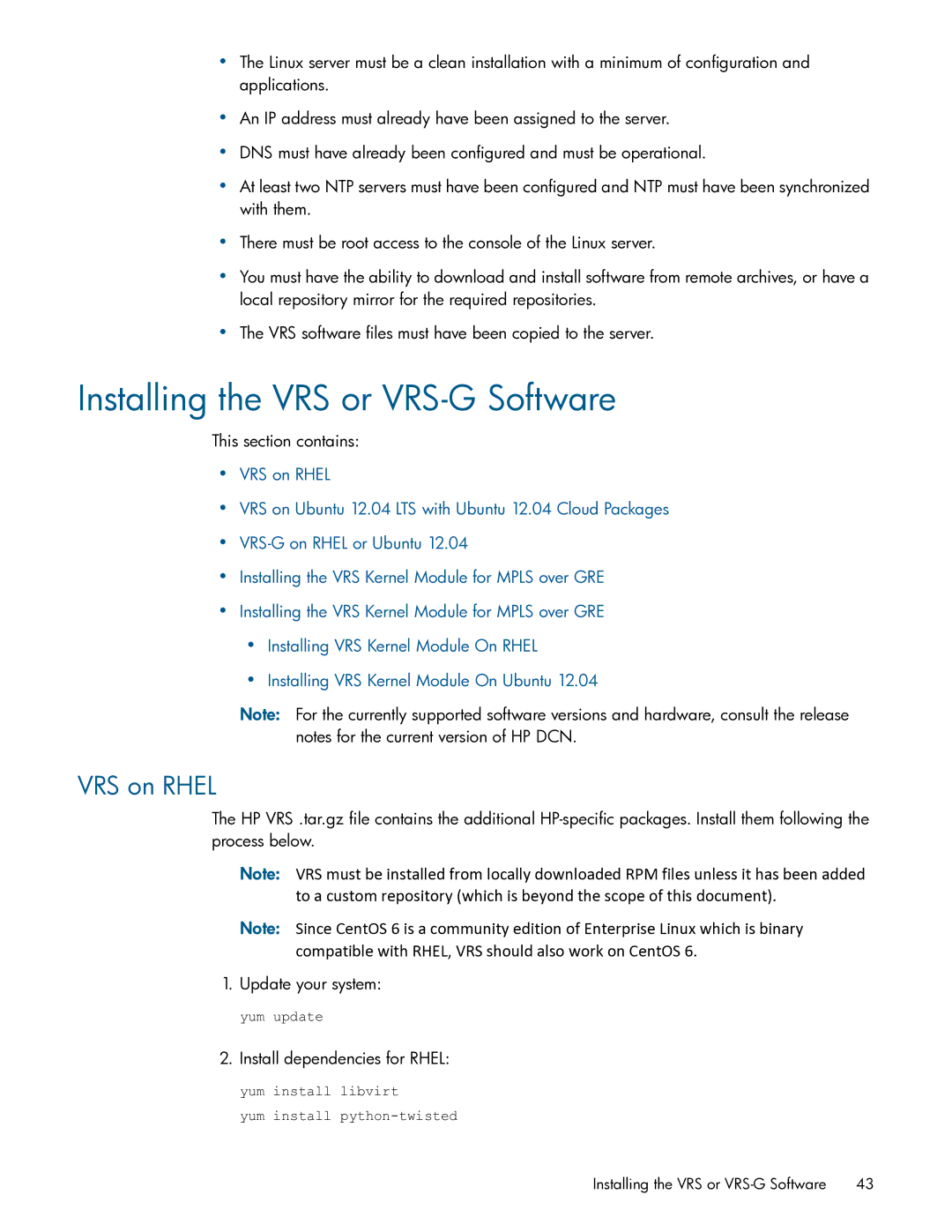•The Linux server must be a clean installation with a minimum of configuration and applications.
•An IP address must already have been assigned to the server.
•DNS must have already been configured and must be operational.
•At least two NTP servers must have been configured and NTP must have been synchronized with them.
•There must be root access to the console of the Linux server.
•You must have the ability to download and install software from remote archives, or have a local repository mirror for the required repositories.
•The VRS software files must have been copied to the server.
Installing the VRS or VRS-G Software
This section contains:
•VRS on RHEL
•VRS on Ubuntu 12.04 LTS with Ubuntu 12.04 Cloud Packages
•
•Installing the VRS Kernel Module for MPLS over GRE
•Installing the VRS Kernel Module for MPLS over GRE
•Installing VRS Kernel Module On RHEL
•Installing VRS Kernel Module On Ubuntu 12.04
Note: For the currently supported software versions and hardware, consult the release notes for the current version of HP DCN.
VRS on RHEL
The HP VRS .tar.gz file contains the additional
Note: VRS must be installed from locally downloaded RPM files unless it has been added to a custom repository (which is beyond the scope of this document).
Note: Since CentOS 6 is a community edition of Enterprise Linux which is binary compatible with RHEL, VRS should also work on CentOS 6.
1. Update your system:
yum update
2. Install dependencies for RHEL:
yum install libvirt
yum install
Installing the VRS or | 43 |
